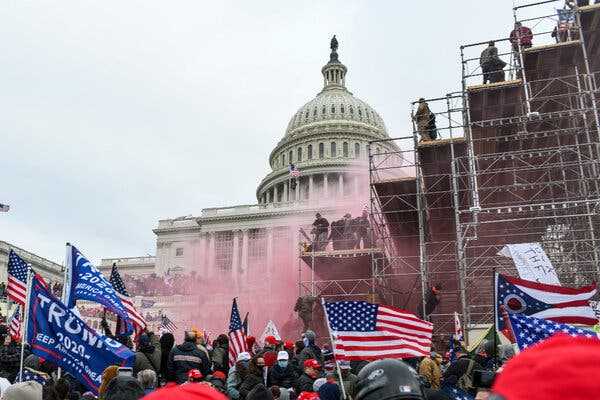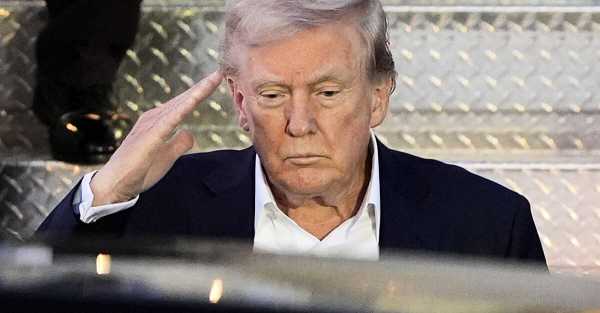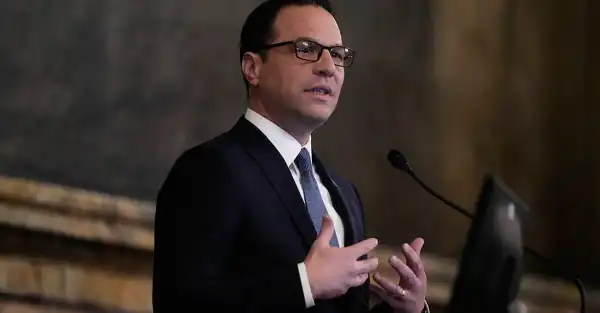n0orw4 e1wiw3jv0″>The report by Democrats provided the most comprehensive picture to date of how federal officials missed, downplayed or failed to act on multiple threats of and plans for violence.
- Give this articleShare full article

A 106-page report released by the Senate Homeland Security Committee’s staff highlights and adds to evidence already uncovered by the news media and the now-defunct House Jan. 6 committee.
Democrats on the Senate Homeland Security Committee on Tuesday released a scathing report that detailed how the F.B.I., the Department of Homeland Security and other federal agencies repeatedly ignored, downplayed or failed to share warnings of violence before the Jan. 6, 2021, attack on the Capitol.
The 106-page report, entitled “Planned in Plain Sight,” highlighted and added to evidence already uncovered by the now-defunct House Jan. 6 committee, news reporting and other congressional work to provide the most comprehensive picture to date of a cascading set of security and intelligence failures that culminated in the deadliest assault on the Capitol in centuries.
Aides said Senate staff obtained thousands of additional documents from federal law enforcement agencies, including the Justice Department, before drafting the report. It includes multiple calls for armed violence, calls to occupy federal buildings including the Capitol and some of the clearest threats the F.B.I. received but did little about — including a warning that the far-right group the Proud Boys was planning to kill people in Washington.
“Our intelligence agencies completely dropped the ball,” said Senator Gary Peters, Democrat of Michigan and the chairman of the Homeland Security Committee. He added: “Despite a multitude of tips and other intelligence warnings of violence on Jan. 6, the report showed that these agencies repeatedly — repeatedly — downplayed the threat level and failed to share the intelligence they had with law enforcement partners.”
The report determined the F.B.I.’s monitoring of social media threats was “degraded mere days before the attack,” because the bureau changed contracts for third-party social media monitoring. The committee obtained internal emails showing that F.B.I. officials were “surprised” by the timing of the contract change and “lamented the negative effect it would have on their monitoring capabilities in the lead-up to Jan. 6.”
But the investigation made clear that monitoring was not the only issue. It faulted the F.B.I. for failing to act on an array of dire warnings.
On Jan. 3, 2021, the F.B.I. became aware of multiple posts calling for armed violence, such as a Parler user who said, ”Come armed.” On Jan. 4, Justice Department leaders noted multiple concerning posts, including calls to “occupy federal buildings,” discussions of “invading the capitol building” and individuals arming themselves “to engage in political violence.”
Still, the report highlighted interviews with two F.B.I. leaders who said they were unaware that Congress could come under siege.
“If everybody knew and all the public knew that they were going to storm Congress, I don’t know why one person didn’t tell us,” Jennifer Moore, the special agent in charge of the F.B.I. Washington Field Office’s intelligence division, told the Senate investigators.
Jill Sanborn, the former assistant director of the F.B.I.’s counterterrorism division, testified: “None of us had any intelligence that suggested individuals were going to storm and breach the Capitol.”
The performance of the Department of Homeland Security’s Office of Intelligence and Analysis was also criticized. The report found that the agency, on Jan. 2, discovered that individuals were sharing a map of the Capitol online. One employee messaged another, saying, “feel like people are actually going to try and hurt politicians.”
But agency analysts appeared not to take such threats seriously, even as it became clear that the violence being warned about was materializing. At 2:58 p.m. on Jan. 6, after the police had declared a riot and the Capitol had been locked down, analysts internally noted online chatter that “called for more violent actions,” but added that “at this time no credible information to pass on has been established.”
A representative for the F.B.I. said that it had been working with law enforcement agencies, including the Capitol Police, in the lead-up to and on the day of Jan. 6: “We also set up command posts and had tactical assets ready to deploy should our partners request such assistance.”
The agency added that after the attack it increased its focus on “swift information sharing” with law enforcement partners, and that it also “made improvements to assist investigators and analysts in all of our field offices throughout the investigative process.”
A representative for the Department of Homeland Security said the agency “has strengthened intelligence analysis, information sharing and operational preparedness to help prevent acts of violence and keep our communities safe” since the attack.
The report was not the first to analyze serious security failures during and before the Jan. 6 attack on the Capitol. A bipartisan group of senators, including Mr. Peters, released a report in June 2021 that outlined large-scale failures.
The House committee investigating the Jan. 6 attack on the Capitol also detailed a “colossal intelligence failure,” uncovering tips like a Dec. 26 warning that the Proud Boys were amassing “a large enough group to march into D.C. armed and will outnumber the police so they can’t be stopped.”
That committee, which undertook one of the largest investigative efforts in congressional history, drew some criticism from some of its own staff for focusing intensely on former President Donald J. Trump’s role in the plan to overturn the 2020 election, and not placing as much emphasis on law enforcement’s intelligence failures.
Mr. Peters said his committee’s report was meant “to fill in some gaps.”
Luke Broadwater covers Congress. He was the lead reporter on a series of investigative articles at The Baltimore Sun that won a Pulitzer Prize and a George Polk Award in 2020. @lukebroadwater
- Give this articleShare full article
Source: nytimes.com



